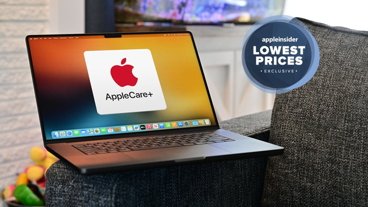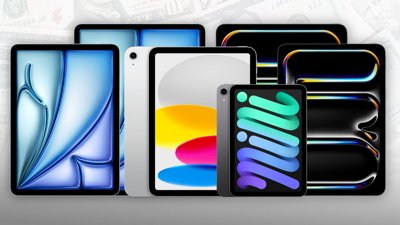IDC: Apple still leads RIM as No. 2 worldwide smartphone maker
The new data, released Monday, shows Apple with 16.1 percent of the market thanks to record sales of 16.2 million iPhones during the holiday quarter. Apple's year-over-year growth of 86.2 percent was stronger than rivals Nokia and Research in Motion, but lagged well behind Android-based manufacturers Samsung and HTC, which saw 438.9 percent and 258.3 percent year-over-year growth, respectively.
"Android continues to gain by leaps and bounds, helping to drive the smartphone market," said Ramon Llamas, senior research analyst with IDC's Mobile Phone Technology and Trends team. "It has become the cornerstone of multiple vendors' smartphone strategies, and has quickly become a challenger to market leader Symbian.
"Although Symbian has the backing of market leader Nokia, Android has multiple vendors, including HTC, LG Electronics, Motorola, Samsung and a growing list of companies deploying Android on their devices."
IDC noted that Apple gained more ground in the worldwide smartphone market last quarter, with shipment volume growth stemming from the Asia/Pacific region, as well as Japan. Also noted was Apple's greater success in the enterprise market, as 88 of the Fortune 100 companies are now deploying the iPhone for use in their ranks.
Apple still remains the No. 2 overall smartphone maker behind Nokia, which took 28 percent of the market with 28.3 million handsets shipped. But Apple is gaining on the leader, which saw just 36.1 percent year-over-year growth.
The strength of the iPhone is also helping Apple to extend its lead over Research in Motion, which came in third with 14.5 percent of the market and shipments of 14.6 million units. Apple first passed RIM in total quarterly sales last fall.
For the calendar year 2010, Apple finished in third, lagging behind RIM for the full 12-month span. But it was Apple's strong finish at the end of the year, capped off with a record quarter, that helped the Cupertino, Calif., company maker pull ahead of the BlackBerry maker.
IDC has predicted that the smartphone market will continue its tremendous growth through 2011, as handset makers offer more features in their new devices. Noted in the report were recent rumors that Apple is exploring the use of RFID near-field communications technology to turn the iPhone into an electronic wallet for retail transactions.
"The high-end of the market has been important to help grow the smartphone market in recent years," Llamas said. "IDC expects vendors to provide more mid-range and low-end smartphones at lower prices to reach the mass market. In the same manner, even high-end devices will become available at lower prices. This will result in greater competition and more selection for users."
 AppleInsider Staff
AppleInsider Staff













 Malcolm Owen
Malcolm Owen

 Amber Neely
Amber Neely

 Marko Zivkovic
Marko Zivkovic
 David Schloss
David Schloss
 Wesley Hilliard
Wesley Hilliard
 Mike Wuerthele and Malcolm Owen
Mike Wuerthele and Malcolm Owen









25 Comments
More correctly should read "Apple still trails Nokia as......."
More correctly should read "Apple still trails Nokia......."
Or even more correctly "Apple leads RIM, closes gap on Nokia"
I mean seriously, how long do you think they'll remain on top? I'm not seeing anything very impressive from them these days (that's not to say their new phones aren't nice.)
Or even more correctly "Apple leads RIM, closes gap on Nokia"
I mean seriously, how long do you think they'll remain on top? I'm not seeing anything very impressive from them these days (that's not to say their new phones aren't nice.)
I'd say gone by gone by July.
The CDMA iPhone will have Apple right on Nokia's heels come this time next year, if not flat out overtaking them.
Counting units sold for calculating market share is not really fair. Average iPhone price is $600 as we know. What is the average price of Nokia smartphone? Around $100 or so? Which means Nokia is already well behind Apple in smartphone $ revenues.